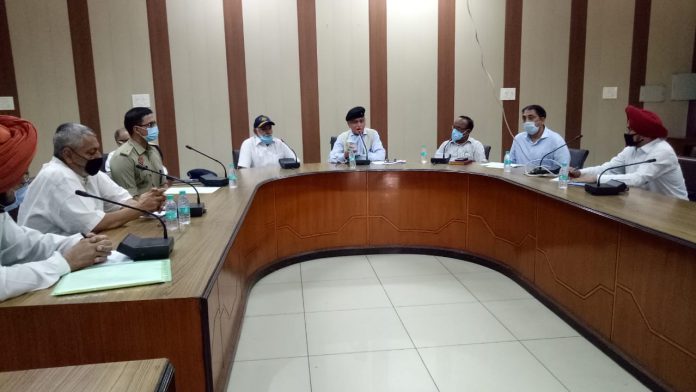
Ludhiana, May 15: With labour shortage caused due to the ongoing pandemic, direct seeding of rice (DSR) is a possible solution and farmers have evinced keen interest in this technology; many would be adopting it for the first time. However after reports of some farmers already starting direct seeding of rice, scientists at Punjab Agricultural University, Ludhiana, have cautioned farmers, as DSR involves more precision in timing and greater accuracy in operations compared to conventional transplanted rice.
video: महामारी फैली या फैलाई गई किया बड़ा खुलासा सुनिए Dr. Amar Singh Azad से
As a note of precaution for first time users of the technology, PAU experts said that DSR gives best yield and quality when sowing is done in the month of June. Early sowing, in the month of May, results in higher use of irrigation water and higher incidence of weeds. In case of early sown rice, pollination may coincide with high temperature leading to partially filled grains. Added together, these factors may contribute to lowering yield and quality.
Apprehensions regarding the delay in sowing of next crop may be the reason for early sowing of rice by the farmers. It is clarified that DSR matures 7-10 days earlier than transplanted rice, therefore, first fortnight of June (1-15 June) is the ideal time for direct seeding. And, short duration varieties, like PR 126 and Pusa Basmati 1509, can also be sown in the second fortnight of June (16-30 June). However, farmers opting for Pea or Potato as succeeding crop can sow in first week of June using short duration varieties such as PR 126.
In direct seeding, the field is first laser levelled and irrigated (rauni). The field is prepared in tar-wattar condition, with two cultivations followed by couple of heavy planking, and seeded immediately. Tar-wattar DSR provides best results when sown with ‘Lucky seed drill’ which does sowing and herbicide spray simultaneously, and, if ordinary rice drill is used spray immediately after sowing. Make sure that seed drill is fitted with iron chains, behind tynes, for proper covering of rice seed with moist soil otherwise the moisture will dry quickly and affect germination. This is very important especially in cases where farmers will modify and use conventional drills like zero till or happy seeder for rice seeding. Before sowing, seed (8 kg/acre) is soaked in water for 8-12 hours, dried in shade and treated with fungicide. Sowing depth is very important and, ideal depth for direct sowing is 2.5 to 3.0 cm. Prefer sowing in the evening or in early morning hours to get best results from pre-emergence herbicide. Apply first irrigation around 21 days after sowing; this delay in first irrigation help in lower incidence of weeds as well as lower incidence of nutrients deficiency particularly iron.
Experts further clarified that since direct seeding is a knowledge intensive technique, farmers need to be skillful in its complete package, before expanding its cultivation to a large area. The farmers who are successfully doing direct seeding started initially from a small scale, gained expertise, before expanding area under this technique. In the present situation of labour shortage, farmers need to adopt this technology keeping the complete set of practices in mind.




